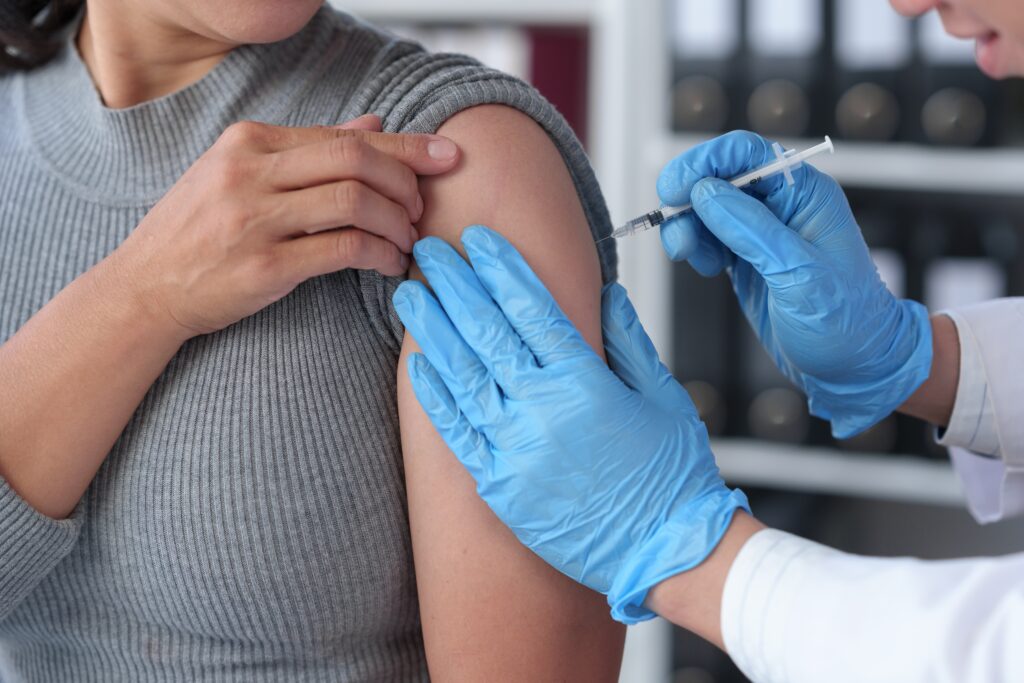Covid ‘Razor Throat’ Variant Now Found in Over 15 Us States
Last updated on
Imagine swallowing glass every time you try to speak, eat, or even breathe. That’s how some people are describing the intense throat pain caused by the latest family of COVID-19 variants spreading across the United States—so sharp and searing it’s been dubbed the “razor throat” symptom. These newest strains, descendants of the “FLiRT” variants (KP.2, KP.3) that circulated in 2024, are now collectively the dominant force in the U.S. According to the latest data from the Centers for Disease Control and Prevention (CDC) for early July 2025, variants in this new group account for nearly 50% of all new infections. First identified through genomic surveillance in the spring of 2025, these variants are now found nationwide. While experts confirm that they do not appear to cause more severe overall illness than their predecessors, the pronounced symptoms and rapid spread are raising questions: What makes these new variants different? Should we be concerned about a significant summer wave? And how can we protect ourselves and others?What Are the New COVID Variants?
Just as seasons change, the virus that causes COVID-19 is in a constant state of transformation. The strains currently causing concern are the newest members of the large Omicron family—think of them as direct descendants of the “FLiRT” variants that were common in 2024. These variants have captured global attention for two main reasons. First, they are highly transmissible. The secret to their success lies in small changes to their spike protein, which is the ‘key’ the virus uses to enter our cells. Virologists explain that these tiny adjustments make the virus better at spreading and a bit trickier for our immune systems to recognize immediately. Second, they are associated with a particularly intense sore throat, a symptom that has become a defining feature of this wave of infections.What Are The Symptoms?
Medically, the sensation stems from inflammation in the oropharynx, the part of the throat just behind That sharp, swallowing-glass sensation isn’t just a figure of speech; it points to significant inflammation in the oropharynx—the part of the throat right behind your mouth. When a virus like SARS-CoV-2 infects these tissues, the resulting swelling and irritation can cause acute pain. It’s important to have a balanced perspective. While an intensely painful sore throat has become a hallmark of recent COVID-19 waves, it is not exclusive to this virus. Similar, severe throat pain can be a symptom of other illnesses like influenza, mononucleosis, or bacterial infections such as strep throat. This overlap makes it difficult to self-diagnose based on this symptom alone. However, its consistent and prominent appearance this summer is a key feature of the current variants. Alongside what many call a “razor throat,” the primary symptoms associated with the current COVID-19 variants remain consistent with their recent Omicron ancestors:-
- Sore throat (often severe and the first symptom to appear)
-
- Congestion or runny nose
-
- Cough
-
- Fatigue
-
- Headache
-
- Muscle and body aches
-
- Fever or chills
-
- Loss of taste or smell (remains possible, but is far less common than with earlier strains)
Where and How the New Variants Are Spreading
The new family of COVID-19 variants has established its dominance across the United States, showcasing the virus’s relentless ability to evolve. Data from the CDC’s public health surveillance systems for early July 2025 show these descendants of the “FLiRT” lineage are now responsible for nearly half of all infections. This follows a familiar pattern where new, more transmissible variants emerge and outcompete their predecessors. Having been detected in virtually every state, the geographic footprint of these variants is now nationwide. Rather than being isolated to specific regions, their presence is confirmed through wastewater surveillance data from coast to coast. This metric has become a crucial tool for public health officials, offering a clearer picture of community transmission levels at a time when individual testing is less common than in previous years. This trend isn’t unique to the United States. The World Health Organization (WHO) noted the rise of these same variants in other parts of the world, including Europe and Southeast Asia, weeks before they became dominant in America—a testament to their high transmissibility and our interconnected world. The reason for the rapid spread is twofold. Genetically, the variants possess spike protein mutations that make them more efficient at causing infection. Behaviorally, the summer season itself creates ideal conditions for transmission. Increased travel, more social gatherings, and a greater reliance on indoor, air-conditioned spaces combine to give the virus more opportunities to spread. While current national COVID levels are not at peak pandemic highs, wastewater data reveals a clear upward trend, suggesting the start of a summer wave similar to those seen in previous years. The focus for public health officials is not on causing alarm, but on encouraging awareness. The spread of these variants is a quiet reminder that the virus is still a part of our lives, and ignoring early symptoms or relaxing all precautions can disrupt our health, work, and community.Understanding the Risk: Severity, Vulnerability, and Long COVID
The rise of any new dominant variant naturally brings a wave of questions: Is this one worse? Should I be alarmed? According to the consensus from public health agencies, the new variants do not appear to cause more severe disease in the general population compared to their recent predecessors. The primary risk isn’t increased virulence, but rather their heightened transmissibility, which can lead to larger waves of infection. For a healthy individual with up-to-date vaccinations, an infection may feel like a bad cold or flu. However, it’s a story of different risks for different people. A mild illness for one person can be a serious threat to another. The same groups remain most vulnerable to severe complications: older adults, individuals with weakened immune systems, and people with underlying health conditions like heart disease, lung disease, or diabetes. For these individuals, vigilance remains key, as they are more susceptible to developing serious outcomes like pneumonia that require hospitalization. This is why vaccination continues to be a cornerstone of protection. The updated 2024-2025 COVID-19 vaccine formulation was designed to target more recent versions of the virus and remains highly effective at preventing what matters most: severe illness, hospitalization, and death. Despite ongoing public debate and misinformation, major health bodies like the World Health Organization maintain that vaccination is the safest and most reliable tool for protecting ourselves and our communities. Beyond the immediate illness, the risk of Post-COVID Conditions, or “Long COVID,” remains a significant concern. The WHO and CDC acknowledge that even a mild initial infection can lead to long-term health issues for people of any age or health status. These debilitating symptoms can range from persistent fatigue and “brain fog” to chronic pain, affecting one’s ability to work, maintain relationships, and enjoy life. The desire to avoid Long COVID is, for many, a primary reason to continue taking precautions.How to Navigate the Current Wave with Confidence
As these new variants circulate, we can rely on a toolkit of proven, practical measures to keep ourselves and our loved ones safe. During the rainy season, when we often spend more time indoors in shared spaces, these simple habits become even more important.-
- Stay current with vaccinations: The most recent COVID-19 vaccine (the 2024-2025 formulation) remains the most effective tool for preventing severe outcomes. While it may not always stop a mild infection, it provides robust protection against hospitalization and death. Staying up-to-date is a powerful way to invest in your own well-being.
-
- Listen to your body and test if needed: Be mindful of early symptoms, especially the distinct, severe sore throat that marks many current infections. If you feel unwell, testing can provide clarity and help you take steps to avoid spreading the virus to family, friends, and colleagues at a time when many have returned to in-person work and school.
-
- Prioritize clean air: Ventilation is a key, often overlooked, defense. Even during the rainy season, improving air quality makes a difference. In crowded indoor settings, using a HEPA filter or simply increasing airflow with fans can help disperse virus particles. If you find yourself in a crowded, poorly ventilated space, wearing a high-quality mask is a sensible precaution.
-
- Rely on foundational hygiene The simple habits still matter. Frequent handwashing, covering coughs and sneezes, and—most importantly—staying home when you are sick are fundamental courtesies that protect our entire community from a host of respiratory illnesses.
Awareness, Not Alarm
Some of the links I post on this site are affiliate links. If you go through them to make a purchase, I will earn a small commission (at no additional cost to you). However, note that I’m recommending these products because of their quality and that I have good experience using them, not because of the commission to be made.









































 JOIN OVER
JOIN OVER
Comments